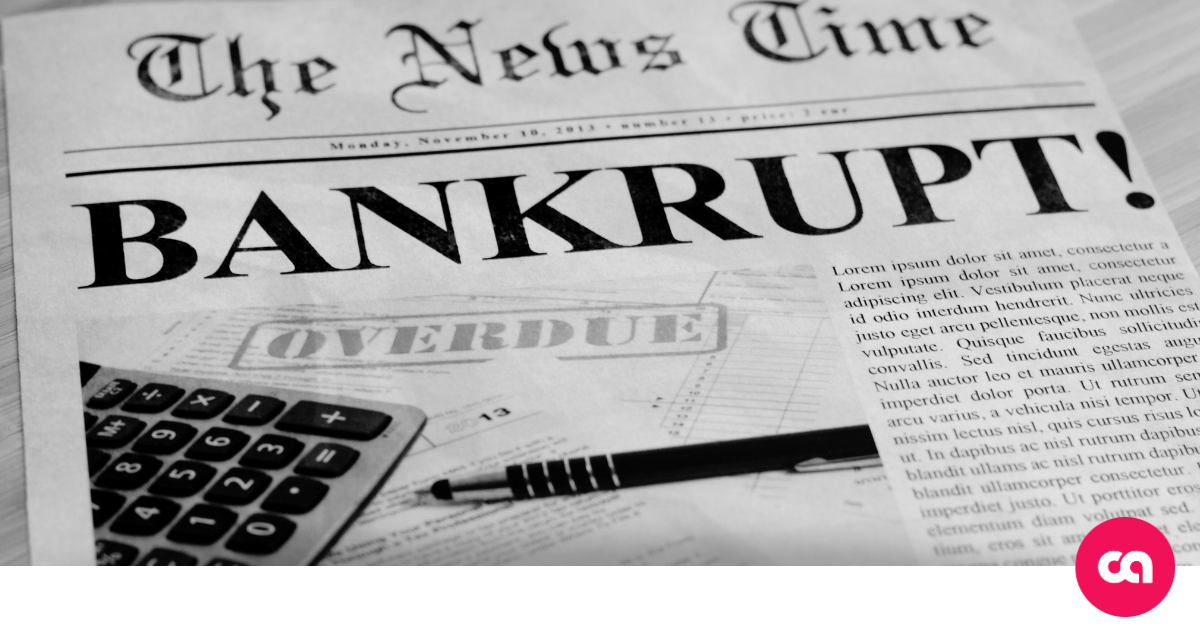The Impact of Customer Bankruptcy on Your Collection Efforts

When customers file for bankruptcy, it can be challenging for businesses to collect the debts they are owed. Bankruptcy laws were designed to protect individuals and businesses from overwhelming financial burdens, and this means that creditors must follow specific rules when collecting debts from bankrupt customers. In this article, we will discuss the impact of customer bankruptcy on your collection efforts and provide tips on how to navigate this complex process.
The Impact of Customer Bankruptcy on Your Collection Efforts:
1. Automatic Stay:
When a customer files for bankruptcy, an “automatic stay” goes into effect, which means that creditors cannot attempt to collect debts from the customer while the bankruptcy case is pending. This stay is designed to give the debtor a chance to reorganize their finances or discharge their debts. Creditors who violate the automatic stay can be subject to penalties and fines [1].
2. Priority of Claims:
Not all debts are created equal when it comes to bankruptcy. Certain debts are given priority over others, and creditors must be aware of where their claims fall in the pecking order. In a Chapter 7 bankruptcy, secured creditors are typically paid first, followed by unsecured creditors with priority claims, such as taxes or child support. After these claims are paid, any remaining funds are distributed among general unsecured creditors [2].
In a Chapter 13 bankruptcy, the debtor creates a repayment plan that is submitted to the court for approval. Priority debts are given preference in the plan, and the debtor must pay these debts in full over the life of the plan. General unsecured creditors may receive only a fraction of what they are owed [3].
3. Dischargeability of Debts:
Some debts may be discharged, or forgiven, in bankruptcy, while others are not. Debts that are dischargeable include credit card debts, medical bills, and personal loans. However, debts such as taxes, student loans, and child support are generally not dischargeable [4].
Creditors should be aware of which debts are dischargeable and which are not. Attempting to collect a discharged debt can result in penalties and fines [5].
4. Role of the Bankruptcy Trustee:
In both Chapter 7 and Chapter 13 bankruptcies, a bankruptcy trustee is appointed to oversee the case. The trustee’s role is to review the debtor’s financial records, collect assets that can be liquidated to pay creditors, and distribute funds to creditors according to the bankruptcy laws. The trustee is also responsible for objecting to any inappropriate or fraudulent claims made by creditors [6].
Creditors should be aware of the bankruptcy trustee’s role and be prepared to work with them to resolve the debt collection process.
5. Bankruptcy Discharge:
Once a bankruptcy case is complete, the debtor is granted a discharge, which means that they are no longer legally responsible for the debts that were included in the bankruptcy. Creditors are prohibited from attempting to collect on discharged debts, and any attempts to do so can result in penalties and fines [7].
Tips for Collecting Debts from Bankrupt Customers:
1. Get a Good Lawyer:
Navigating the bankruptcy process can be complex, and creditors should seek the assistance of a qualified attorney. A good lawyer can help creditors understand their rights and obligations under the bankruptcy laws and can represent them in court proceedings if necessary.
2. File a Proof of Claim:
Creditors who want to receive a portion of the funds from a bankrupt debtor’s estate must file a proof of claim with the bankruptcy court. This document outlines the creditor’s claim and provides supporting documentation. Creditors who fail to file a proof of claim may not receive any funds from the bankruptcy estate [8].
3. Monitor the Bankruptcy Case:
Creditors should closely monitor the bankruptcy case and keep track of all relevant deadlines and court filings. This will help ensure that the creditor’s rights are protected and that they are informed of any changes or developments in the case.
4. Stay in Communication:
Even though creditors cannot attempt to collect debts from a bankrupt customer during the automatic stay, they can still communicate with the debtor and their attorney. Maintaining open lines of communication can help creditors understand the status of the bankruptcy case and ensure that they are included in any distributions from the bankruptcy estate.
5. Consider Negotiating:
In some cases, it may be possible to negotiate a settlement with a bankrupt debtor or the bankruptcy trustee. This can help creditors recover at least a portion of the debt owed and avoid the time and expense of pursuing the debt through the bankruptcy courts [9].
Conclusion:
The impact of customer bankruptcy on your collection efforts can be significant, but creditors who understand the bankruptcy process and follow the rules can still recover some or all of the debt owed. Creditors should work with experienced attorneys, file proof of claims, monitor the bankruptcy case closely, maintain open communication, and consider negotiating a settlement. By following these tips, creditors can protect their rights and recover the funds they are owed.
Sources:
[1] “Automatic Stay.” United States Courts. https://www.uscourts.gov/services-forms/bankruptcy/bankruptcy-basics/automatic-stay
[2] “Bankruptcy: Understanding the Basics.” Federal Trade Commission. https://www.consumer.ftc.gov/articles/0224-bankruptcy-understanding-basics
[3] “Chapter 13 Bankruptcy: What You Need to Know.” Nolo. https://www.nolo.com/legal-encyclopedia/chapter-13-bankruptcy
[4] “Dischargeable Debts in Bankruptcy.” LegalZoom. https://www.legalzoom.com/articles/dischargeable-debts-in-bankruptcy
[5] “Bankruptcy: Discharge of Debts.” Federal Trade Commission. https://www.consumer.ftc.gov/articles/0228-bankruptcy-discharge-debts
[6] “The Role of the Trustee in Bankruptcy Cases.” United States Courts. https://www.uscourts.gov/services-forms/bankruptcy/bankruptcy-basics/role-trustee-bankruptcy-cases
[7] “The Bankruptcy Discharge And Beyond: What To Do After Your Bankruptcy.” LegalZoom. https://www.legalzoom.com/articles/the-bankruptcy-discharge-and-beyond-what-to-do-after-your-bankruptcy
[8] “Filing a Proof of Claim in Bankruptcy.” LegalZoom. https://www.legalzoom.com/articles/filing-a-proof-of-claim-in-bankruptcy
[9] “Tips for Collecting Debts from Bankrupt Customers.” The Balance Small Business. https://www.thebalancesmb.com/collecting-debts-from-bankrupt-customers-397354.